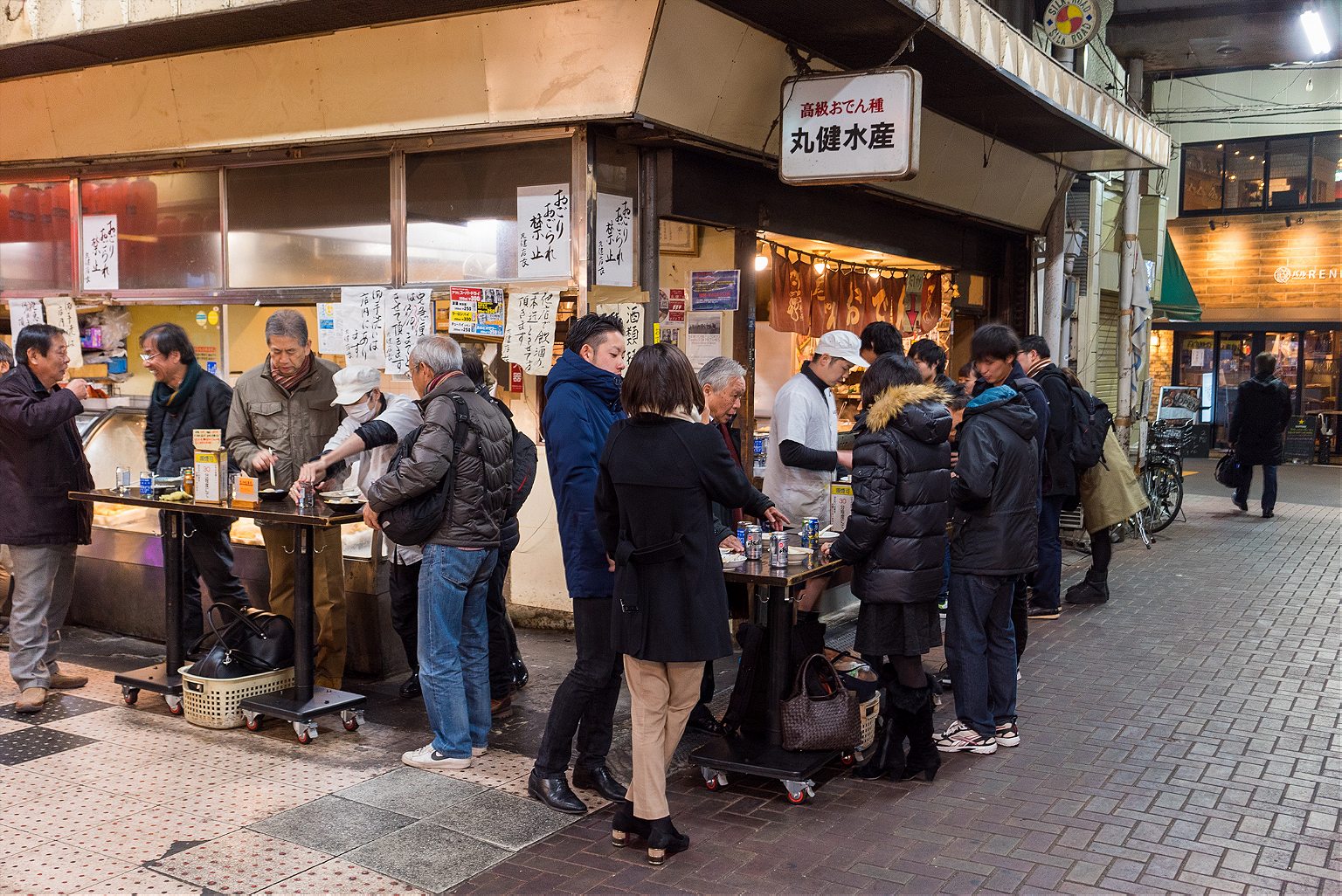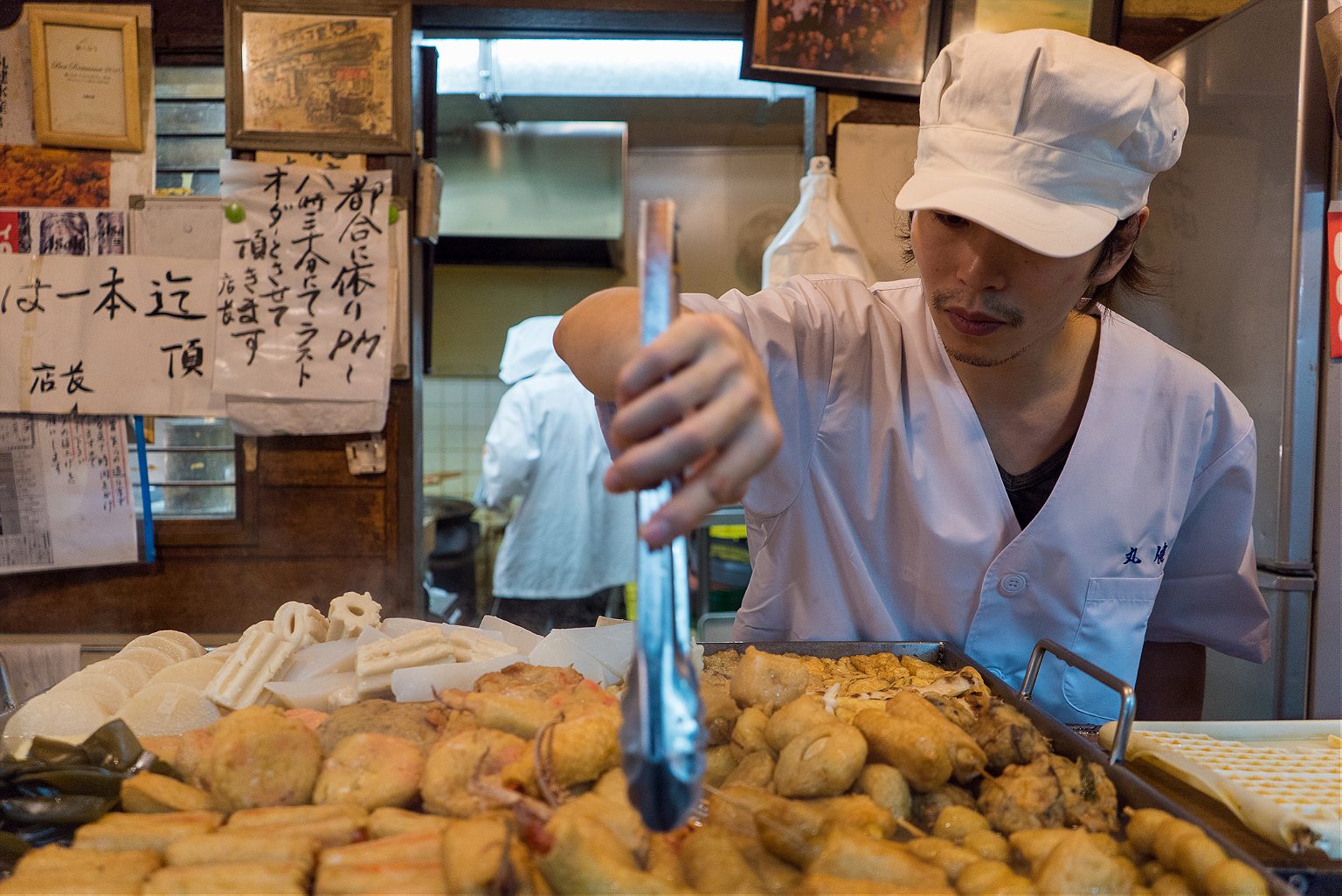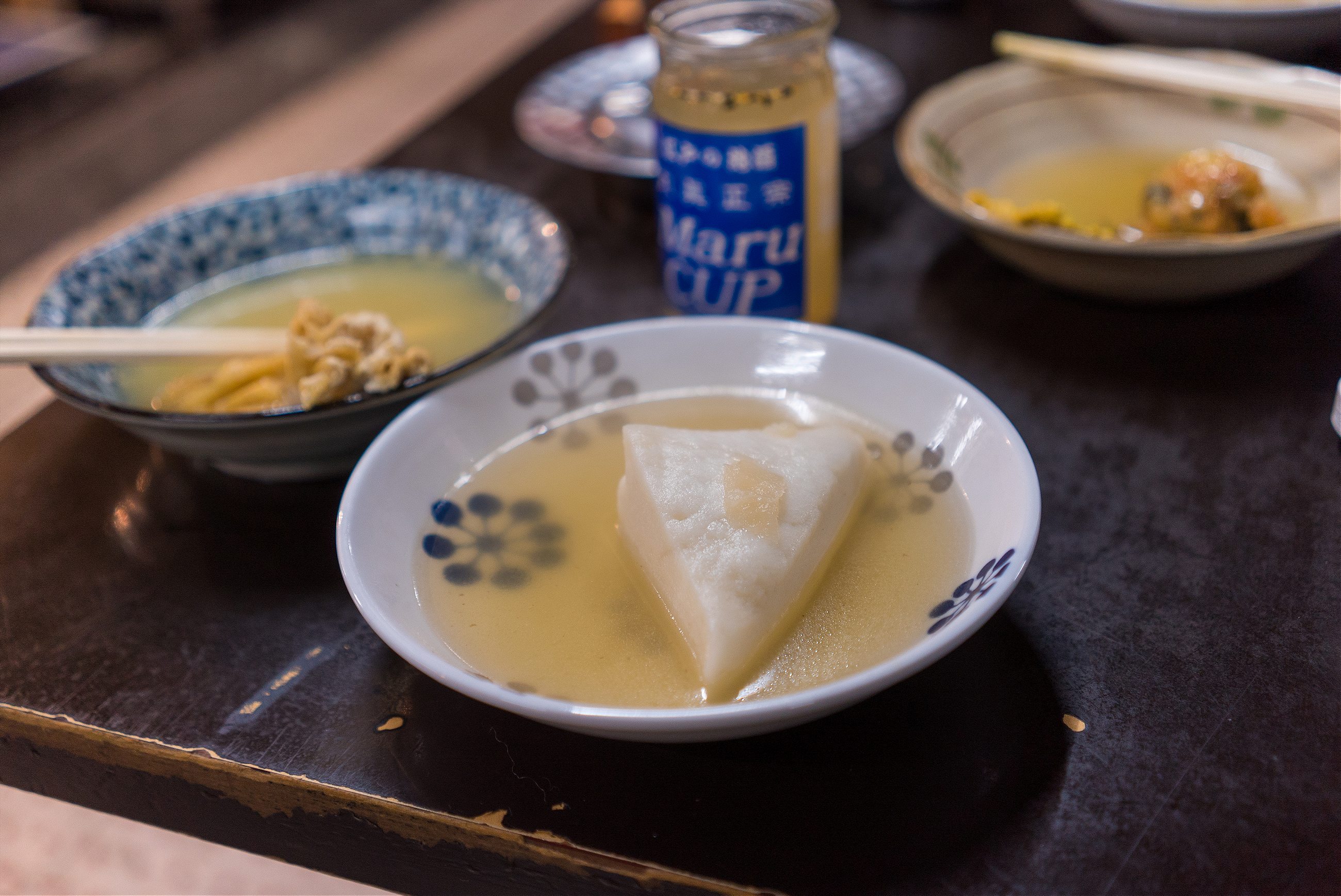Stand, eat, and move along.
There is no ‘best’ anything in Tokyo. In city of more than 13 million food-obsessed inhabitants, you could spend a lifetime eating just one dish and still not all try every last iteration. In the face of this many choices, your personal taste has to be your guide.
So it’s entirely possible that Maruken Suisan, a 60-odd-year-old, family-run, stand-and-eat oden shop in Akabane may not be everyone’s cup of genmaicha. But for those to whom it appeals, the pull is inescapable.
Oden is a type of Japanese hot pot. It’s simply a bowl of light broth with an improvised set of additional ingredients: boiled eggs, seafood bits, vegetables or anything seasonal or regional at that time and place. Among those are some perhaps mandatory items, like daikon (radish) and konjac (a type of yam). But some stores also offer more modern additions such as fish cake-wrapped sausages or meatballs wrapped in cabbage.
When people eat it at home it’s often a full meal, but when eaten out, it’s usually just a stepping stone in your day’s culinary journey. This is the first reason why it’s my perfect dish in Tokyo: oden joints tend to be small spaces where customers stand, eat, and move along. It’s just right for the rhythm of this city.


The first time I visited Maruken Suisan, I was on a photography and video assignment for a Japanese publication that took us around Japan to eat, learn, and write about regional oden styles. It’s a utilitarian place, designed for customers to get their bowl and a quick cup of sake and then move along all in less than 30 minutes. It’s at the end of a somewhat seedy shopping arcade in a part of Tokyo that’s closer to neighboring Saitama prefecture than any of fashionable centers in the city. It looks every bit its age, but there’s something about the air in there—humid, warm, inviting—that beckons you in. The owner is another draw. He’s open, friendly, passionate, and flanked by a pleasant and—by Tokyo standards at least—boisterous staff.
Then I actually tried the oden. I was not an easy sell, given that I had just been on a full-time oden pilgrimage around Japan. But the difference at Maruken Suisan starts with the broth. It’s based on fish stock and seasoned with soy sauce for a light, clear, broth that is just salted enough to allow the ingredients to shine, yet rich enough to ward off the chill of a Tokyo winter evening. I’ve been a regular ever since.

At Maruken Suisan, customers select and pay for just the items they want, so every bowl of oden is, in a sense, custom-made. So here are my recommendations. Get the hanpen—a light and fluffy fish cake made out of surimi fish paste. It’s delicate yet firm, an oddly satisfying, logic-defying consistency. Because the hanpen doesn’t stew as long as some of the other items, it’s less infused with broth, making it a nice counterpoint. It sells out quickly, so your best bet it to get there between 6 and 7 p.m. when the second batch of hanpen for the day is usually ready. For heft, I also add “Stamina Skewers”—different types of seafood, egg, and possibly some dumpling dough—formed into balls and then stuck on a skewer. Then add some daikon, because it’s a vegetable (eat healthy you guys) and mochikinchaku pockets, because it’s mochi in soup, which is the best thing ever. Finally—and this might just be my kink because I eat here so often—ask the person behind the counter to surprise you with one or two more items.
I always get the maru-cup too: the sake is made at a brewery 15 minutes away, in one of only two sake breweries in Tokyo’s central 23 wards. It’s essentially cheap grog, but you drink just the first ¾ or so, and then top it up with broth. All the flavors fuse and form an exquisite, layered soup that is slightly inebriating, completely warming, and—for my tastes at least—the perfect starter for the Tokyo night to come.